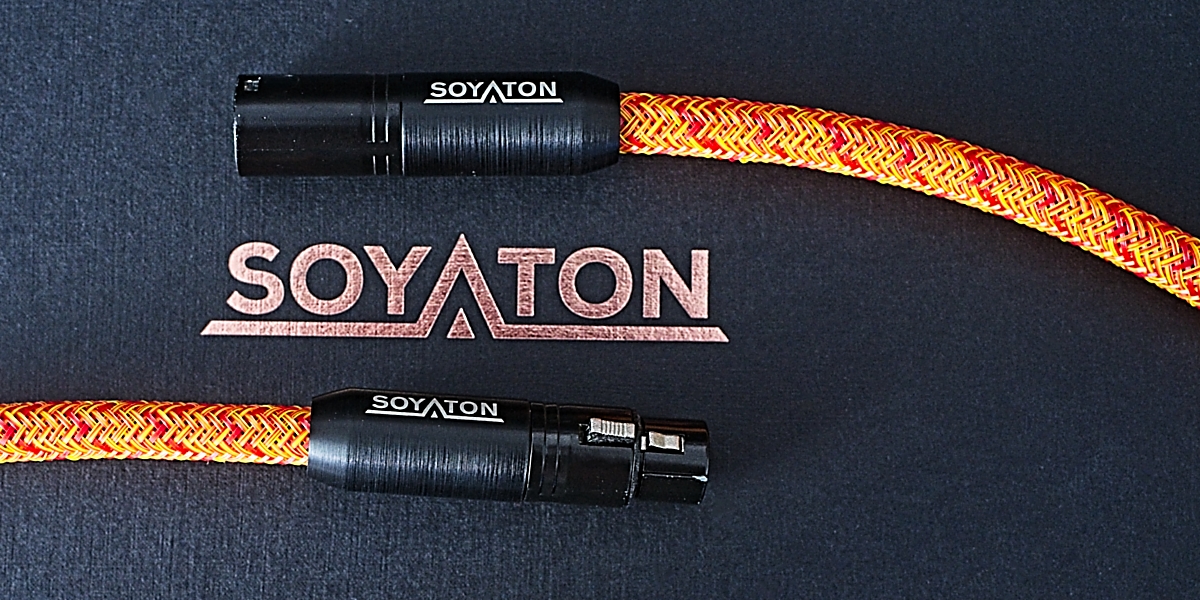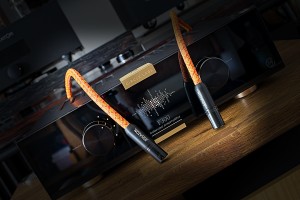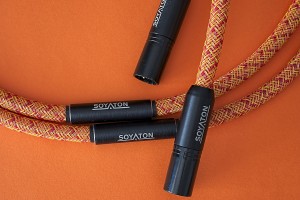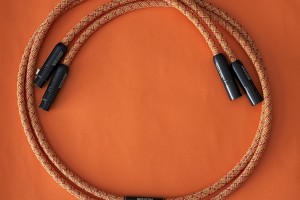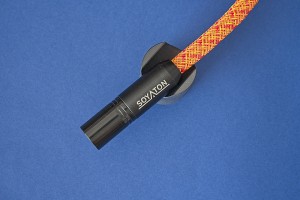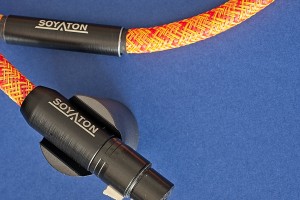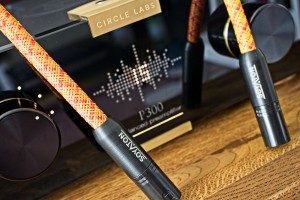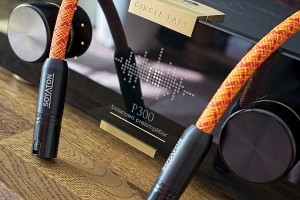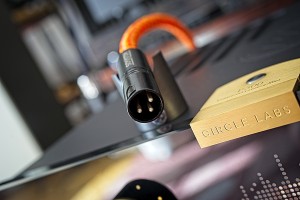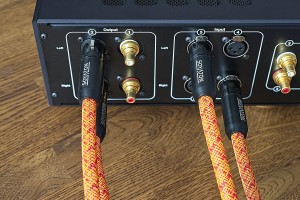I have been using Soyaton Benchmark RCA interconnects and speaker cables for a while in my reference system and have been very happy with both of them. Now it’s time to check out the latest additions to the brand’s lineup, Soyaton Benchmark Mk2 XLR IC.
Introduction
Our readers must be familiar with the Soyaton brand as we published already a few reviews of their cables. What’s more, Benchmark RCA interconnects and speaker cables (you can find my review HERE) became part of my reference system. Even before that wires sharing the very same Soyaton DNA replaced silver wiring in my J.Sikora KV12 and KV12 Max tonearms (see the reviews HERE and HERE).
That’s why it shouldn’t come as a surprise that also in the case of the XLR version of Benchmark Mk2 interconnect I wanted to find out the progress Soyaton achieved with it. You will find details of what changed compared to the original version below. The modifications don’t seem like much, but, spoiler alert, it is an even better cable in some regards, so the changes, while they might seem only cosmetic, do affect the performance.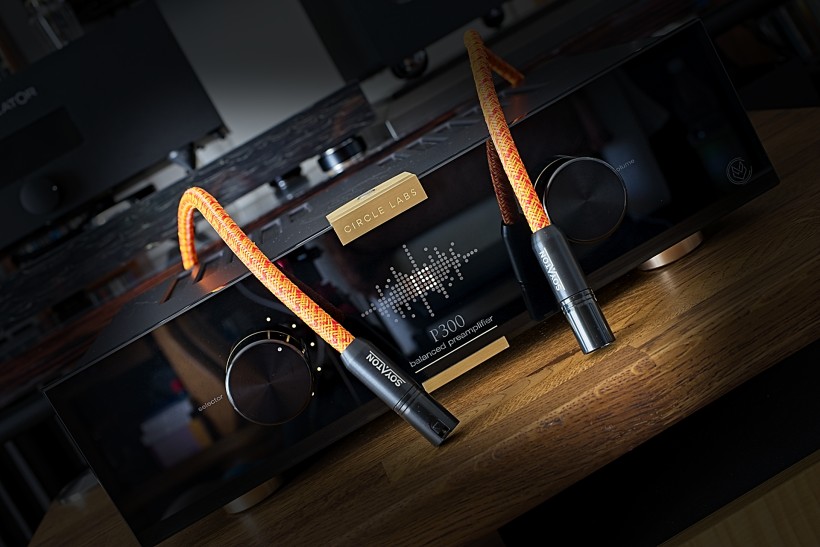
Design and features
Nothing changed in Soyaton’s approach to sharing information about their designs – information is scarce. Some manufacturers present their developments in detail, others let the potential buyers make the decision based on auditions unbiased by technical jargon. I have never been a particularly „technical” guy, and I don’t mind either approach, as for me the performance, what I can hear is always a decisive factor and not the knowledge of what’s inside a cable or any other audio component, for that matter.
What we do know about the Soyaton Benchmark Mk2 XLR interconnect is that the same as its predecessors, it features conductors made of high quality and high purity (6N) Japanese OCC (Ohno Continuous Cast) copper. The wires are shipped to the USA where they are gold-plated with a thin layer of 24-carat gold. Then, the gold-plated wires are treated with colorless enamel which acts as electrical insulation. After that, they are fitted into tiny silicon tubes with air used as a dielectric. The material of the tubes was selected due to its antivibration properties to protect conductors from the influence of any resonances. The whole cable assembly process takes place in the Soyaton’s headquarters outside Krakow.
The cables are not shielded, but the well-thought-through, tested geometry protects the signal running through the wires from EMI and RFI. The outside layer is a high-quality sleeving – an orange one for interconnects, just like in the original version. Midlength of each interconnect you will find a nicely made metal element with the brand’s logos. The cable remained quite thin and as flexible as the predecessor which in my view is a good thing as it makes installation in a setup much easier. The XLR interconnect is available in two standard lengths of 100 and 150 cm. Custom orders are available upon request and priced individually.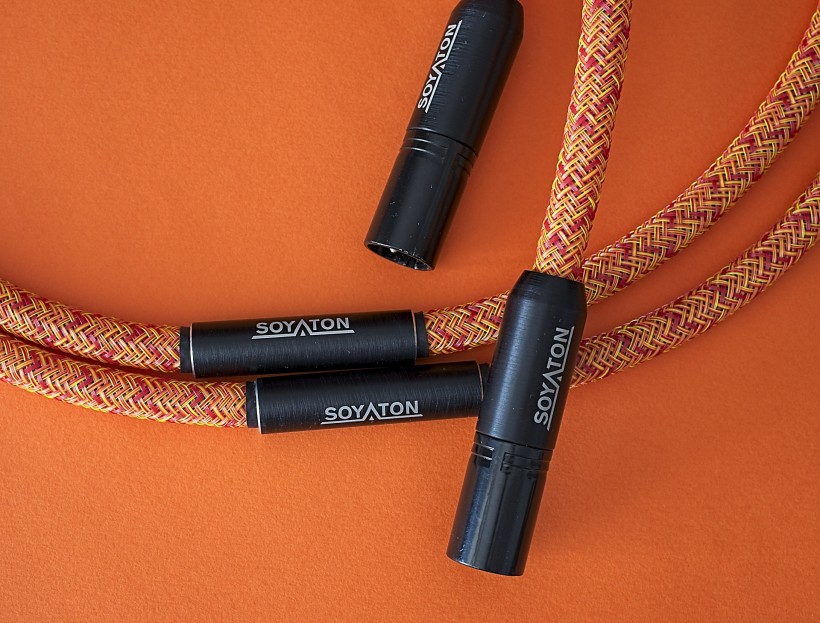
What’s the difference between the latest Mk2 version and the original? At first glance, there is not much difference between the two. Upon closer inspection one realizes that they do differ in terms of aesthetics – the Mk1 featured heat shrinks applied at the plugs and those disappeared in the latest version. As the manufacturer told me, aesthetics was one reason for that – the new version does look better, but the other, even more important one was the effect of the new heat-shrink-less solution on durability and wear resistance. It may not be as important for „regular” home users who often plug the cables in and don’t even touch them for months, or years. On the other hand, professional users, who prefer almost exclusively balanced (XLR) connections, use them more intensely hence durability and wear resistance are much more important for them. Regardless of whether you are a home or a PRO user, I am sure you will appreciate the enhanced durability against tear and wear of the Bechmark Mk2 version.
The second difference compared to the original version is the proprietary plug body, custom-designed for Soyaton cables. It is made of high-quality aluminum, which not only improves aesthetics but also offers excellent properties in terms of vibration absorption as well as EMI/RFI shielding. The latter is crucial in the closest vicinity of electrical devices (such as hi-fi separates). Another difference, of crucial sonic importance, according to Soyaton, is the use of silver-plated contacts (in the previous version they were gold-plated). The change was introduced to achieve even higher resolution and further opening of the treble, the manufacturer says, while maintaining the excellent sound characteristic of all Soyaton cables. So while my RCA version and the Mk2 XLR share most of their DNA it still seemed worth it to compare the two, as well as the XLR with the KBL Sound Himalaya 2 interconnect that I have been using for a few months now as my reference.
Sound
Not much has changed in my reference system over the last year or two, which means that I still use mostly unbalanced components and connections. Actually, there are some fully balanced devices featured in my system such as GrandiNote Shinai integrated amplifier or Circle Labs P300 + M200 preamplifier + power amplifier combo. Still, I don’t have any balanced source so the only symmetric connection I may use, and actually do, is the one between P300 and M200. These two components connected using a balanced link simply perform even better than when using an unbalanced one.
As some of you probably know, a few months ago I acquired the excellent KBL Sound Himalaya 2 XLR IC (review HERE http://hifiknights.com/reviews/kbl-sound-himalaya-ii/) and have been using it ever since to connect the two Circle Labs components. It allowed me to use Himalaya 2 as my reference product for this review, but I also opted for a bit less „cosher” comparison using the original Benchmark RCA IC and the reviewed Soyaton Benchmark Mk2 XLR IC, both connecting Circle Labs devices. Even though these are not quite the same cables it did give me some idea about the improvements of the Mk2 version over the older one.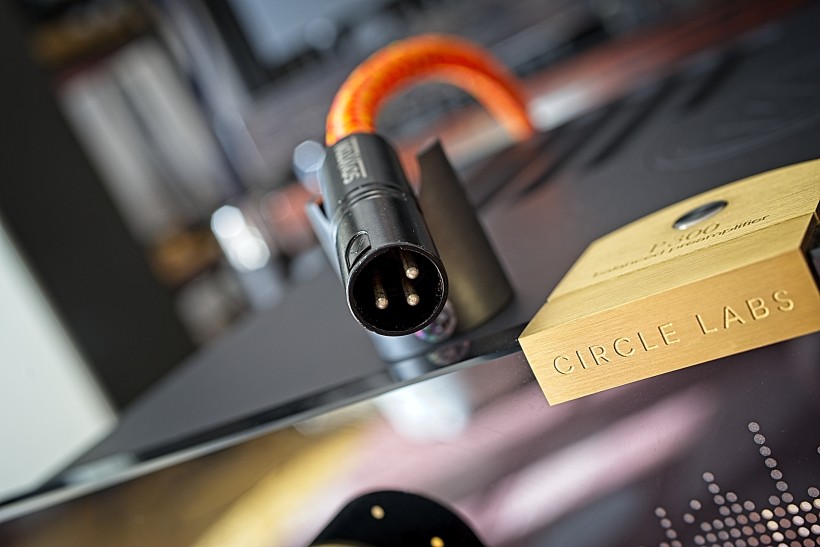
Knowing the original Benchmark cables pretty well I found quite interesting the information manufacturer shared with me saying that the silver contacts used in the Benchmark Mk2 XLR plugs opened up treble even more. For me, already the original version delivered treble like almost no other cable I know. It was incredibly open, filled with air, resolving and quite energetic, and at the same time a bit delicate and sweet. Yes, the speaker cable was even more open and spatial, but it was the combined performance of the two that I appreciated so much that I decided to purchase them for my system.
The short comparison with the original RCA version, both, interchangeably, connecting P300 and M200, proved the designer’s claim quite right. The treble kept basically all the qualities mentioned above, but on top of all that it seemed even more refined, benefiting from even higher resolution. Higher resolution translated also into a better differentiation, hence all the tiny little details were easier to notice. Benchmark Mk2 XLR did not use its resolution to emphasize details though, they were easier to spot only when I wanted to take a closer look at them. They were never thrown to my face, so to speak, as some more aggressive, highly detailed cables sometimes do.
The spatial aspect of the presentation, in terms of the size of the huge space, didn’t change or change only to a very small degree. What did improve beyond doubt was imaging that became more precise, with the large, substantial bodies of instruments getting more explicitly contoured and more precisely rooted on the stage. These changes resulted in an even more realistic, more „here and now” presentation which let me feel a touch more like a participant in the musical events, and not just a passive observer. I can’t help it, the spatial aspects of the presentation are very important to me so any improvement in this area hits my soft spot.
The general feel of the change introduced by Soyaton Benchmark Mk2 XLR versus the original RCA was that of higher precision, a bit more „spark” in the treble area, and increased dynamics. In my experience, both precision and dynamics of presentation improve each time I switch from RCA to XLR connection for the Circle Labs set, at least when both cables offer a comparable level of performance. Yet, the more shiny, even livelier top end seemed to be a quality introduced by the tested cable regardless of it being a balanced one.
A conclusion is simple. If you already use the original version of the RCA Benchmark connecting two balanced devices you might consider upgrading to the Mk2 XLR version especially if your system needs a little shot of energy, or if it sounds a touch too sweet or higher resolution is what you’re after. The changes will not be huge, don’t expect a life-changing experience with such an upgrade, but they should be significant enough to appreciate them and make the results worth the effort.
The second, actually more reliable part of the test included comparing Soyaton Benchmark Mk2 XLR IC to my current reference, KBL Sound Himalaya 2 XLR IC. Both interchangeably connected the same two fully balanced Circle Labs components, preamplifier and power amplifier. The first impression after switching one to the other was sort of counterintuitive, even if expected based on my previous experiences. Mind you, Benchmark Mk2 XLR features gold-plated copper conductors, while Himalaya 2 utilizes silver ones. Based on stereotypes, and even some experiences with other cables, the former should have been warmer, denser, smoother, and the latter livelier, brighter (not bright, just brighter), more vivid, right? That’s how often copper and silver are characterized. In this case, though, it is the other way around.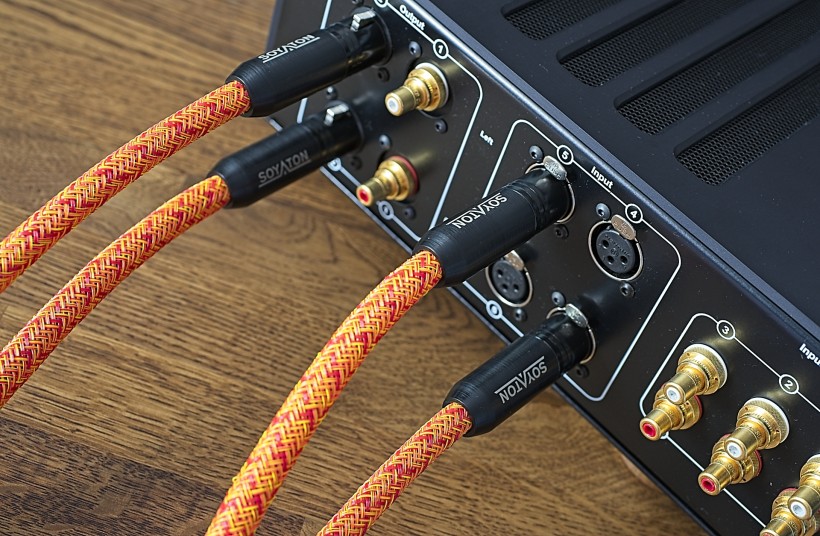
As I already said, based on my experience with other Soyaton cables and Himalaya 2 the results of head-to-head comparison were to be expected. The tested cable offered rich sound, yet not quite as dense and rich as the competitor. Its sound was warm and natural, but not dark. It was smooth – yes, it ensured a beautiful flow of music – yes, amazingly so, it impressed me with (a bit even better than the RCA version) bass extension – absolutely, but in comparison to KBL Sound, it was definitely not dark. I’d say, it was well-balanced and natural.
On the other hand, it is (good) silver that usually opens the treble up, fills it even better with air, and adds more spark to the high tones, but as it turned out it was Soyaton Benchmark Mk2 XLR that did an even better job in this regard. It also built a larger, in particular deeper, soundstage with reverb presented in a more distinct way. Himalaya 2 on the other hand, rendered richer, „heavier”, more precisely shaped bodies of instruments. Also, the decay phase of sounds seemed a bit longer and played a larger role with it than with Benchmark Mk2. Again, bit counterintuitive, but the leading edge was faster, more immediate, and accurate with the latter.
As a fan of guitars, double bass, and piano I listened to a lot of good recordings of these instruments using both cables. A common conclusion was that with Soyaton Benchmark Mk2 XLR the balance of the sound of each of these instruments was, in comparison (!), set slightly higher, with a bit more emphasis on the strings, while KBL Sound added more body to each of them hence shifting the balance a little bit more towards the „wood”. Consequently, each pizzicato seemed more impressive with the tested interconnect, while whenever conveying the full power of double bass or piano, was required, my current reference cable sounded more impressive.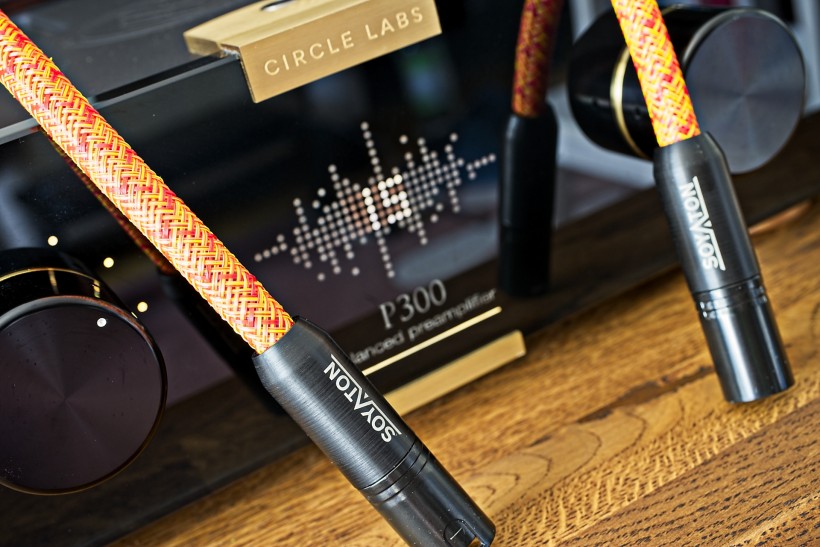
To be clear – Soyaton Benchmark Mk2 did an excellent job as well delivering the lower end of the range. It surprised me more than once with a truly visceral lowest bass notes but what I liked about most about it was how tight and well-differentiated this range was. A true powerful slam only came when it was really needed, only then it become visceral. Brilliant PRAT is yet another quality of the reviewed cable, one that allowed me to fully enjoy my regular blues night followed by a rock one. Obviously pace, rhythm, and timing are important in other music genres as well, but it’s the blues that is so strongly based on the rhythm, that it just doesn’t sound quite right if there are any issues with it. Timing is a key to any music, so it shouldn’t ever be an issue with Benchmark Mk2 in the system.
Summary
If you already know the original Soyaton Benchmark IC, whether RCA or XLR version, what you need to know is that the latest Mk2 XLR will offer everything you (most likely) love about the Mk1 version adding even more refinement, some spark in the treble, further improving resolution and, it seems to me, also adding a bit more visceral slam in the lower bass range. If you haven’t had a chance to check out the original nor Mk2 yet, you can expect a beautiful effortless flow of music, an incredibly spatial, open, airy presentation (particularly when paired with the speaker cable, but also on its own) that seems a touch sweet and delicate and at the same time quite energetic.
While it does not offer quite as rich, as dense sound as some other cables, it impresses with how expressive and dynamic it is. It will offer you a fatigue-free, highly immersive, very „here and now” musical experience. If that’s what you’re looking for you definitely should try the Soyaton Benchmark Mk2 XLR out.
Prices (when reviewed):
- Soyaton Benchmark Mk2 XLR IC: 1m: 3.600,00 EUR / 1m; 4.200,00 EUR / 1,5m
Manufacturer: SOYATON
Associated equipment:
- Digital source: a custom passive server with WIN10, Roon, Fidelizer Pro 7.10, JCAT NET XE, and JCAT USB XE cards with FERRUM HYPSOS Signature power supply, KECES P8 (mono) linear power supply for the server, JCAT USB Isolator
- D/A Converter: LampizatOr Pacific +Ideon Audio 3R Master Time (USB signal regenerator)
- Analog front end: J.Sikora Standard MAX turntable, J.Sikora KV12 tonearm, AirTight PC-3, phono stages: Grandinote Celio MK IV, ESE Lab Nibiru V 5.
- Power amplifiers: GrandiNote Shinai
- Preamplifier: Audia Flight FLS1
- Loudspeakers: GrandiNote MACH4, Ubiq Audio Model ONE Duelund Edition.
- Interconnects: Bastanis Imperial, Hijiri Million, Hijiri HCI-20, TelluriumQ Ultra Black, KBL Sound Himalaya 2 XLR, David Laboga Expression Emerald USB, David Laboga Digital Sound Wave Sapphire Ethernet
- Speaker cables: LessLoss Anchorwave
- Power cables: LessLoss DFPC Signature, Gigawatt LC-3
- Power: Gigawatt PF-2 MK2 and Gigawatt PC-3 SE Evo+; a custom power line with Gigawatt LC-Y in-wall cable; Gigawatt G-044 Schuko and Furutech FT-SWS-D (R)
- Network: Silent Angel Bonn N8 + Silent Angel Forester F1 + optical LAN isolator
- Racks: Base VI, Rogoz Audio 3RP3/BBS
- Anti-vibration accessories: ROGOZ-AUDIO SMO40 and CPPB16 platforms and ROGOZ AUDIO BW40MKII feet, Franc Accessories Ceramic Disc Slim Feet and Wood Block Platform, Graphite Audio CIS-35 and IC-35


